Retro Replay Review
Gameplay
Powder’s core gameplay revolves around a reconfigurable ship armed with five distinct weapon modes. Rather than hunting down an endless chain of power-ups, you switch between these modes on the fly, using the space bar or a second joystick button. This design encourages experimentation: one moment you’re laying down wide-area spread shots to cover multiple altitudes, and the next you’re unleashing a concentrated gatling beam from three rotating barrels for pinpoint damage. Each mode brings its own tactical advantages and drawbacks, keeping every encounter fresh.
(HEY YOU!! We hope you enjoy! We try not to run ads. So basically, this is a very expensive hobby running this site. Please consider joining us for updates, forums, and more. Network w/ us to make some cash or friends while retro gaming, and you can win some free retro games for posting. Okay, carry on 👍)
The third mode in particular highlights Powder’s design philosophy. Rocket launchers fire in the direction you’re moving, enabling dive-bomb attacks and strategic intercepts from below. Though these missiles boast only a short effective range, they force you to master movement and positioning—dive too steeply, and you might fly past an enemy; hesitate, and they’ll be firing back. Combined with a playfield that spans one and a half screens vertically, you’ll find yourself weaving through enemy fire and environmental obstacles with satisfying precision.
Level progression alternates between classic horizontal scrolling and occasional diagonal sections, while frequent sub-boss encounters break up the pace and test your mastery of each weapon mode. These minibosses appear without warning, halting the forced scroll and demanding immediate adaptation. Dodging their patterned attacks and switching modes under fire delivers a steady stream of challenges. Though there’s a learning curve to juggling five weapon types, Powder strikes an excellent balance: it’s approachable for newcomers, yet rewarding for veterans who relish mastering every nuance.
Graphics
Graphically, Powder channels the cartoonish flair of SNES and PC Engine shooters, all rendered on the Amiga’s venerable OCS chipset. Despite its 13-year-old hardware, the game boasts finely detailed landscapes—lush forests, sprawling industrial complexes, and crystalline caverns—each enriched with dynamic touches like window reflections and layered parallax. These effects give the world a surprising depth and personality, reinforcing the game’s vibrant, slightly exaggerated art style.
Enemy and ship sprites are solidly animated, with each of your five weapon modes visually distinct. The spread shot fans out in bright arcs, the gatling beam shimmers with electric hues, and the rockets blaze trails of smoke as they streak across the screen. Sub-bosses are particularly well-crafted, often occupying large portions of the playfield and rotating or shifting patterns in real time. Their imposing designs underscore their threat level and make every clash feel noteworthy.
Stage transitions are smooth, with diagonal scrolling sections introducing fresh visual challenges—like scale shifts and dynamic camera pans—without sacrificing performance. Background elements occasionally animate independently, from swaying machinery to drifting clouds, lending personality to otherwise static backdrops. For an OCS title, Powder pushes the chipset to its limits, delivering a polished, colorful presentation that stands up well even alongside contemporaries on more powerful consoles.
Story
True to many arcade-inspired shooters, Powder offers a minimal narrative framework. There’s no sprawling opening cutscene or in-depth character profiles—instead, you assume the role of a lone pilot sent to neutralize an enigmatic threat known only as “The Powder.” This lean approach keeps the focus squarely on gameplay, letting the action speak for itself rather than relying on heavy exposition.
Brief mission blurbs between stages hint at escalating stakes: you’re clearing contaminated sectors, rescuing trapped outposts, and dismantling enemy super-weapons. These concise descriptions provide just enough context to motivate each level without interrupting the flow. The lack of an elaborate storyline may disappoint players seeking dramatic twists, but it also means fewer downtime moments—no cutscenes to skip, no dialogue to fast-forward past.
Ultimately, Powder’s story functions as a backdrop, giving purpose to each high-octane stage. For purists who cherish shooters like Gradius or Thunder Force, this sparseness is a feature, not a flaw. The game delivers on the promise of relentless aerial combat, and the occasional narrative snippet serves to heighten your sense of progression rather than to complicate it.
Overall Experience
Powder delivers a classic side-scrolling shoot ’em up experience with modern touches that belie its Amiga roots. The five-mode weapon system injects strategic depth into what might otherwise feel like a straightforward run-and-gun affair. By emphasizing on-the-fly weapon switching and precise movement, the game rewards quick thinking and adaptability, making each playthrough tense and engaging.
While the story remains intentionally barebones, the presentation and mechanics keep you returning for “one more run.” Graphical flourishes—reflections, multi-layer parallax, animated backgrounds—prove that smart design can overcome hardware limitations. Sub-bosses and diagonal scrolling segments mix up pace and demand new tactics, ensuring the action never grows stale.
For retro enthusiasts and newcomers alike, Powder offers a tight, colorful shmup experience that stands out among Amiga’s shoot-’em-up library. If you’re looking for a game that prioritizes responsive controls, inventive weaponry, and charming pixel art over cinematic storytelling, Powder is well worth your attention. Its blend of old-school thrills and thoughtful design makes it a compelling pick for anyone hunting down the next great classic in their collection.
 Retro Replay Retro Replay gaming reviews, news, emulation, geek stuff and more!
Retro Replay Retro Replay gaming reviews, news, emulation, geek stuff and more!
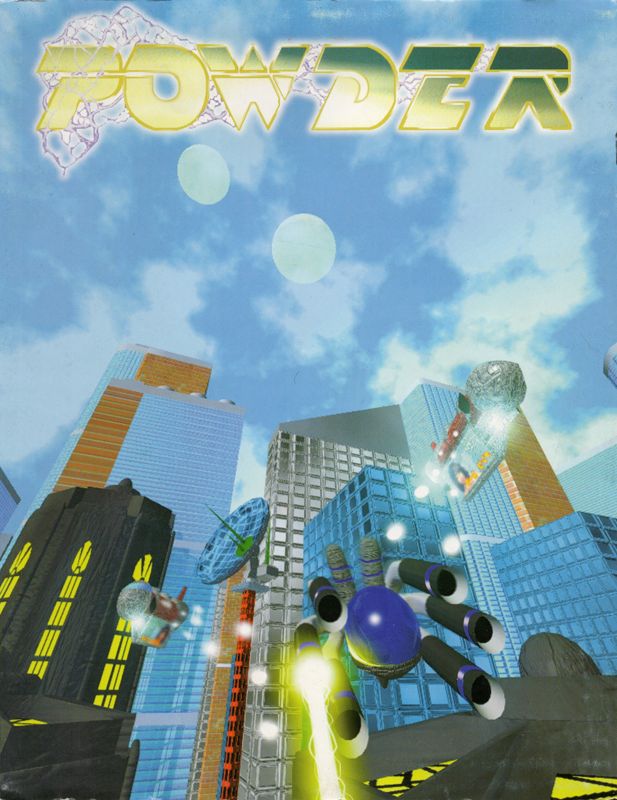
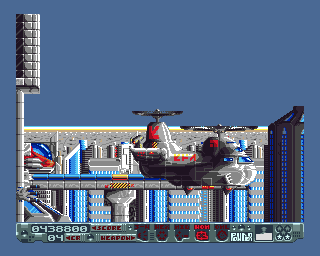
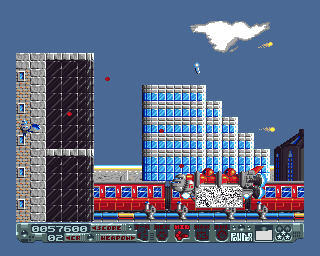
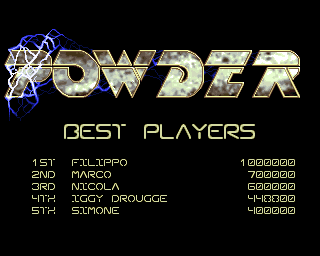

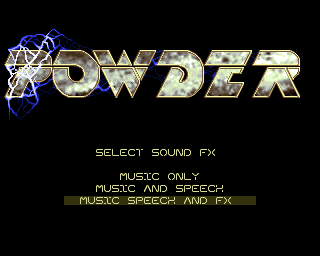

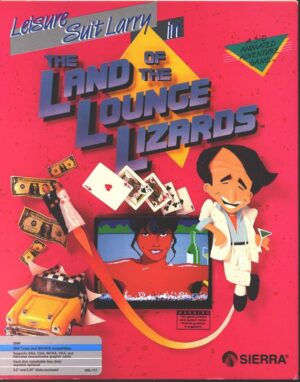

Reviews
There are no reviews yet.